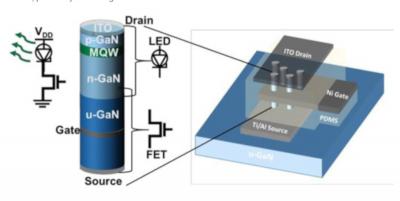Researchers develop a laser-driven programmable non-contact transfer printing technique
Researchers at Zhejiang University developed a laser-driven programmable non-contact transfer printing technique that could be applicable to the transfer of Micro-LED chips. The researchers used an innovative design based on an active elastomeric micro-structured stamp with tunable adhesion.

The tunable adhesive used in this technique features cavities filled with air and encapsulated by a micro-patterned surface membrane, used in easily available sandpapers. The micro-patterned surface membrane can be inflated dynamically to control the interfacial adhesion by heating the air in cavities.








